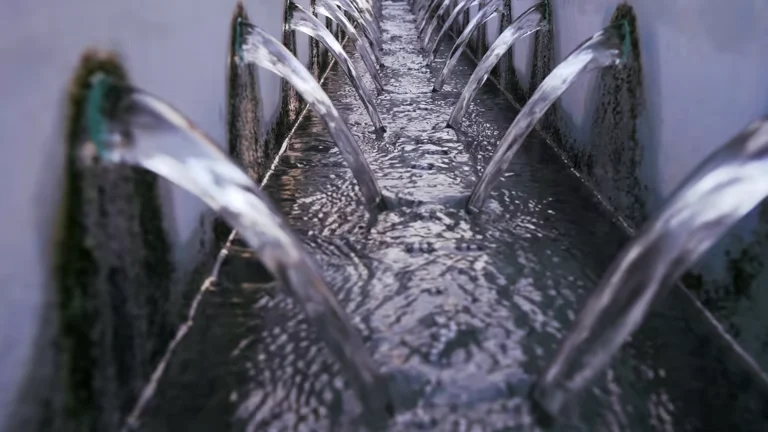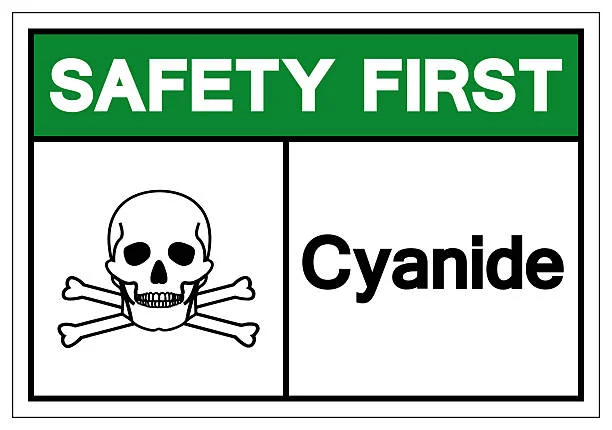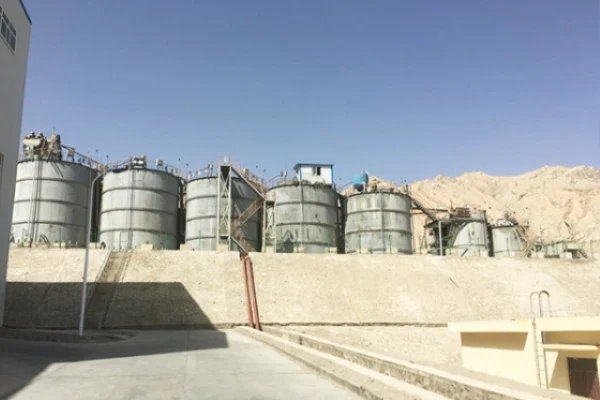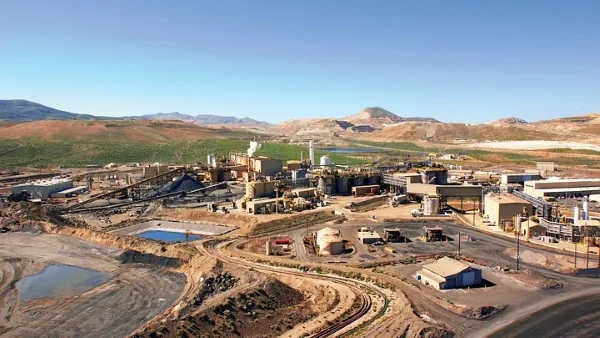
Cyanide - containing waste liquids are extremely toxic and pose a serious threat to human health and the ecological environment. Therefore, proper treatment of such waste liquids is of utmost importance. This article will introduce several common treatment methods for highly toxic cyanide - containing waste liquids.
1. Chemical Oxidation Methods
1.1 Alkaline Chlorination Method
Principle: In an alkaline environment, strong oxidizing agents like chlorine gas, sodium hypochlorite, or calcium hypochlorite are added to the cyanide - containing waste liquid. The hypochlorite ions react with cyanide ions in a two - stage process. First, cyanide is oxidized to cyanate, and then further oxidized to non - toxic substances such as carbon dioxide and nitrogen gas.
Process Flow:
pH Adjustment: Begin by adding sodium hydroxide to the cyanide - containing waste liquid to set the pH value between 10 - 11.
Oxidant Addition: Slowly introduce an appropriate quantity of the selected oxidant, such as sodium hypochlorite solution. The amount of oxidant needed depends on the cyanide concentration in the waste liquid. Stir continuously during addition to ensure even mixing.
Reaction and Monitoring: Let the reaction proceed for several hours and constantly check the cyanide concentration in the waste liquid throughout. Common monitoring techniques include using cyanide - specific electrodes or colorimetric methods.
Neutralization and Discharge: Once the reaction is over and the cyanide concentration meets the discharge standard (usually less than 0.5 mg/L in many regions), adjust the pH of the waste liquid to a neutral range (pH = 6 - 9) with an appropriate acid like sulfuric acid, and then discharge it.
1.2 Hydrogen Peroxide Oxidation Method
Principle: Hydrogen peroxide is a strong oxidizing agent. In the presence of a catalyst such as copper ions, it can oxidize cyanide ions in the waste liquid, converting cyanide into non - toxic nitrogen and carbon dioxide.
Process Flow:
pH Adjustment: Modify the pH value of the cyanide - containing waste liquid to an acidic range, typically around pH = 3 - 5, as the oxidation reaction of hydrogen peroxide with cyanide is more effective under acidic conditions.
Catalyst and Hydrogen Peroxide Addition: Add a small amount of catalyst, for example, copper sulfate, to the waste liquid, and then gradually add hydrogen peroxide solution. The quantity of hydrogen peroxide added must be enough to fully oxidize the cyanide. Since the reaction is exothermic, pay attention to controlling the reaction temperature to avoid overheating.
Reaction and Separation: After the addition is completed, allow the reaction to run for a while. Then, perform solid - liquid separation, such as through sedimentation or filtration, to remove any precipitated substances, like metal hydroxides if there are heavy metal ions in the waste liquid.
Post - treatment: The treated supernatant can undergo further treatment using other methods, such as adsorption or membrane separation, to ensure that the final effluent quality meets the relevant standards.
1.3 Ozone Oxidation Method
Principle: Ozone is a potent oxidizing agent with a high oxidation potential. When introduced into cyanide - containing waste liquids, it directly reacts with cyanide ions, oxidizing them to non - toxic substances like carbonate and nitrogen. The reaction mechanism is complex and may involve intermediate products. The presence of metal ion catalysts, such as copper and magnesium ions, can speed up the reaction rate.
Process Flow:
Waste Liquid Pretreatment: First, remove large - particle impurities and suspended solids in the cyanide - containing waste liquid by filtration or sedimentation. This prevents clogging of the ozone - generating equipment and ensures the reaction proceeds smoothly.
Ozone Generation and Introduction: Use an ozone generator to produce ozone gas, which is then fed into the waste liquid via a gas - distribution device. The amount of ozone introduced needs to be adjusted according to the cyanide concentration and waste liquid volume.
Reaction and Monitoring: Conduct the reaction in a closed reaction tank for a specific period. Monitor the cyanide concentration in the waste liquid in real - time during the reaction. The reaction time is usually shorter than some other oxidation methods, but it still depends on the specific waste liquid conditions.
Effluent Treatment: After the reaction, the treated waste liquid may require additional treatment, such as adjusting the pH value and removing any remaining ozone - related by - products, to meet the discharge standards.
2. Physical - Chemical Methods
2.1 Ion Exchange Method
Principle: Special ion - exchange resins are utilized. These resins have functional groups that can selectively adsorb cyanide ions or metal - cyanide complexes in the waste liquid. For instance, some anion - exchange resins can exchange their anions with cyanide ions in the solution.
Process Flow:
Resin Selection and Preparation: Select an appropriate ion - exchange resin based on the characteristics of the cyanide - containing waste liquid, such as the type of metal - cyanide complexes present. Pretreat the resin by washing it with acid and alkali solutions to activate its exchange function.
Column Packing: Pack the pretreated resin into an ion - exchange column.
Waste Liquid Passing: Slowly pass the cyanide - containing waste liquid through the ion - exchange column. Control the flow rate to ensure sufficient contact time between the waste liquid and the resin.
Resin Regeneration: Once the resin has adsorbed a certain amount of cyanide, it needs to be regenerated. The regeneration process usually involves using a regeneration solution, like a strong acid or strong base solution, to remove the adsorbed cyanide ions from the resin. The regenerated resin can be reused.
Treatment of Regeneration Liquid: The regeneration liquid, which contains a high concentration of cyanide, requires further treatment, usually through the chemical oxidation methods described above, to convert the cyanide into non - toxic substances.
2.2 Adsorption Method
Principle: Adsorbents such as activated carbon and zeolite have a large specific surface area and strong adsorption capacity. They can adsorb cyanide ions and other contaminants in the waste liquid through physical adsorption, like van der Waals forces, and chemical adsorption, such as forming chemical bonds with surface functional groups. Activated carbon, especially, is widely used due to its high adsorption efficiency for various substances.
Process Flow:
Adsorbent Selection and Pretreatment: Choose an appropriate adsorbent according to the nature of the waste liquid. For example, granular activated carbon is often used for large - scale treatment, while powdered activated carbon may be more suitable for some small - scale or high - precision treatment. Pretreat the adsorbent by washing and drying to remove impurities.
Adsorption Process: Add the adsorbent to the cyanide - containing waste liquid and stir continuously to increase the contact area between the adsorbent and the waste liquid. The adsorption time varies depending on the cyanide concentration and the type of adsorbent, usually ranging from several minutes to several hours.
Separation: After the adsorption is complete, separate the adsorbent from the waste liquid using methods like filtration or sedimentation.
Adsorbent Regeneration: Similar to the ion - exchange resin, the used adsorbent can be regenerated. For activated carbon, regeneration methods include thermal regeneration (heating the activated carbon to a high temperature to desorb the adsorbed substances) and chemical regeneration (using chemical reagents to react with the adsorbed substances).
3. Biological Treatment Methods
Principle: Certain microorganisms have the ability to degrade cyanide. These microorganisms utilize cyanide as a source of carbon, nitrogen, or energy under specific environmental conditions. For example, some bacteria can convert cyanide into less toxic substances like ammonia and carbon dioxide through a series of enzymatic reactions. The entire process involves the metabolism of microorganisms, and different microorganisms may have different metabolic pathways for cyanide degradation.
Process Flow:
Microorganism Selection and Cultivation: Select suitable cyanide - degrading microorganisms, which can be isolated from natural environments such as soil or wastewater treatment plants. Cultivate these microorganisms in a laboratory to obtain an adequate amount of microbial inoculum. The cultivation medium should contain appropriate nutrients to support the growth of microorganisms.
Reactor Setup: Set up a biological treatment reactor, such as an activated sludge reactor or a biofilm reactor. In an activated sludge reactor, the microorganisms are in a suspended state in the waste liquid, while in a biofilm reactor, the microorganisms attach to a solid support surface to form a biofilm.
Waste Liquid Treatment: Introduce the cyanide - containing waste liquid into the biological treatment reactor. Control the environmental conditions in the reactor, including temperature (usually around 25 - 35 °C), pH (usually around 7 - 8), and dissolved oxygen content, to create a suitable living environment for the microorganisms.
Monitoring and Control: Continuously monitor the concentration of cyanide and other relevant parameters in the waste liquid during the treatment process. Adjust the operating conditions of the reactor promptly according to the monitoring results to ensure the stable operation of the biological treatment system.
Effluent Treatment: After biological treatment, the effluent may still contain some microorganisms and small amounts of organic matter. Further treatment, such as disinfection (using methods like ultraviolet irradiation or adding disinfectants) and filtration, may be necessary to meet the discharge standards.
4. Considerations in Treatment
Safety First: Cyanide - containing waste liquids are highly toxic, and all treatment operations should be carried out in a well - ventilated area, preferably in a fume hood. Operators should wear appropriate personal protective equipment, including gas - tight gloves, goggles, and respiratory protection devices.
Accurate Concentration Determination: Before treatment, accurately measure the concentration of cyanide in the waste liquid. This is crucial for choosing the appropriate treatment method and determining the dosage of treatment agents.
Combined Treatment: In many cases, a single treatment method may not be sufficient to fully meet the discharge standards. Therefore, consider using combined treatment methods. For example, a combination of chemical oxidation and biological treatment can often achieve better treatment results.
Environmental Impact: When selecting treatment methods and treatment agents, consider their potential impact on the environment. Opt for methods and agents that are environmentally friendly and produce less secondary pollution.
Compliance with Regulations: Ensure that the treatment process and the final effluent quality comply with relevant national and local environmental protection regulations. Regularly monitor and report the treatment results to the relevant environmental protection departments.
In conclusion, the treatment of highly toxic cyanide - containing waste liquids requires a comprehensive consideration of various factors. By choosing the appropriate treatment method and strictly following the operating procedures, we can effectively reduce the toxicity of cyanide - containing waste liquids and protect the environment and human health.
- Random Content
- Hot content
- Hot review content
- Magneto Electric Detonator(Anti stray current)
- Sodiumsulfite Technical Grade 96%-98%
- Toluene
- Barium carbonate 99% powder
- Manganese sulfate
- Sodium sulphate 99% Pharmacy Grade
- 2-Hydroxyethyl acrylate (HEA)
- 1Discounted Sodium Cyanide (CAS: 143-33-9) for Mining - High Quality & Competitive Pricing
- 2China's New Regulations on Sodium Cyanide Exports and Guidance for International Buyers
- 3Sodium Cyanide 98% CAS 143-33-9 gold dressing agent Essential for Mining and Chemical Industries
- 4International Cyanide(Sodium cyanide) Management Code - Gold Mine Acceptance Standards
- 5China factory Sulfuric Acid 98%
- 6Anhydrous Oxalic acid 99.6% Industrial Grade
- 7Oxalic acid for mining 99.6%
- 1Sodium Cyanide 98% CAS 143-33-9 gold dressing agent Essential for Mining and Chemical Industries
- 2High Quality 99% Purity of Cyanuric chloride ISO 9001:2005 REACH Verified Producer
- 3Zinc chloride ZnCl2 for High Molecular Weight Polymers Initiator
- 4High Purity · Stable Performance · Higher Recovery — sodium cyanide for modern gold leaching
- 5High Quality Sodium Ferrocyanide / Sodium Hexacyanoferr
- 6Gold Ore Dressing Agent Safe Gold Extracting Agent Replace Sodium Cyanide
- 7Sodium Cyanide 98%+ CAS 143-33-9











Online message consultation
Add comment: